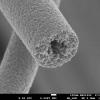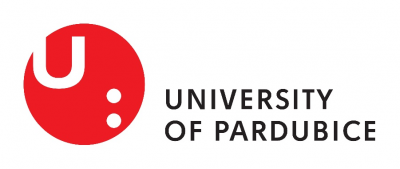Preparation method for submicron tubes of crystalline tungsten oxide
Technology description
| The name of the technology: | Preparation method for submicron tubes of crystalline tungsten oxide |
|---|---|
| Challenge: | Tungsten oxide is prepared in several different forms such as nanoparticles, nanorods and nanofibers. Tungsten oxide is of great interest due to its electrochromic properties, photocatalytic properties and its application as an active ingredient in gas sensors. The usual method of preparing WO3 fibers is electrostatic softening from a suitable precursor solution. Another method of fiber preparation is the hydrothermal method, which produces shorter fibers called nanorods. For electrostatic softening, the precursor solution usually contains a tungsten precursor such as tungsten chloride, sodium or ammonium salt of metatungstate and a carrier polymer, usually PVP, PVA, etc. The developed solution has no chloride or sodium ions (i.e. both corrosion of production equipment and unwanted sodium impregnation are prevented) and is also highly optimized for the centrifugal softening process. |
| Description: |
It is a unique process for the preparation of micron and/or submicron tungsten oxide (WO3) tubes with excellent photocatalytic and photochromic properties by centrifugal softening and subsequent calcination of precursor fibers. The developed process for the preparation of a new form of WO3 using centrifugal softening is fast, energy and economically beneficial. The new WO3 form has*: up to 3 times higher specific surface area up to 4 times higher photocatalytic activity (*compared to the properties of existing forms of WO3, e.g. fibers from electrostatic softening, or commercial WO3 nanoparticles) |
| Commercial opportunity: | Photocatalytic and catalytic applications, gas sensors, photochromic applications, etc. |
| IP protection status: |
Czech patent granted, doc. No. 308897 Application for international protection filed No. PCT/CZ2020/050086 |
| Development status: |
Phase 3Corresponds with TRL 5 and TRL 6 Technology validation and implementing it in real environment. Testing the technology outside of the laboratory and its adjustment to external conditions.
|
| Partnering strategy: | Co-development Collaboration licensing |
| More information: | |
| Images: | |
| Categories: | Nanotechnology Chemistry |
| Owner of a technology: | Univerzita Pardubice |

